Pitigliano is one of the most impressive sites in the Maremma, in the Tuff Valley in southern Tuscany. This village crowns a striking rock of tuff overlooking the green and steep gorges of the river Lente, with an allure of true natural fortress. The tall houses built with the same tuff stone seem to be an outcrop of rock, forming a cliff flan a rampart in themselves.
Historical elements
The evidence of human occupation in Pitigliano goes back a long way, from prehistoric settlements to the Romans, especially through the important Etruscan occupation that left many passages carved into cliffs and tombs.
The Aldobrandeschi controlled the city as most of the Maremma region in the Middle Ages, followed by the Renaissance by the Orsini of Rome, a brief presence in Siena, then the Medici and their heirs from Lorraine.
Pitigliano had an important link with his Jewish community, to the point that it is called «the little Jerusalem», many Jews of Florence and Rome having been an example there refugees from the seventeenth century in the face of the persecutions of the Catholic church. The ghetto district with its synagogue and museum remains, although the Jewish presence here has dried up over time.
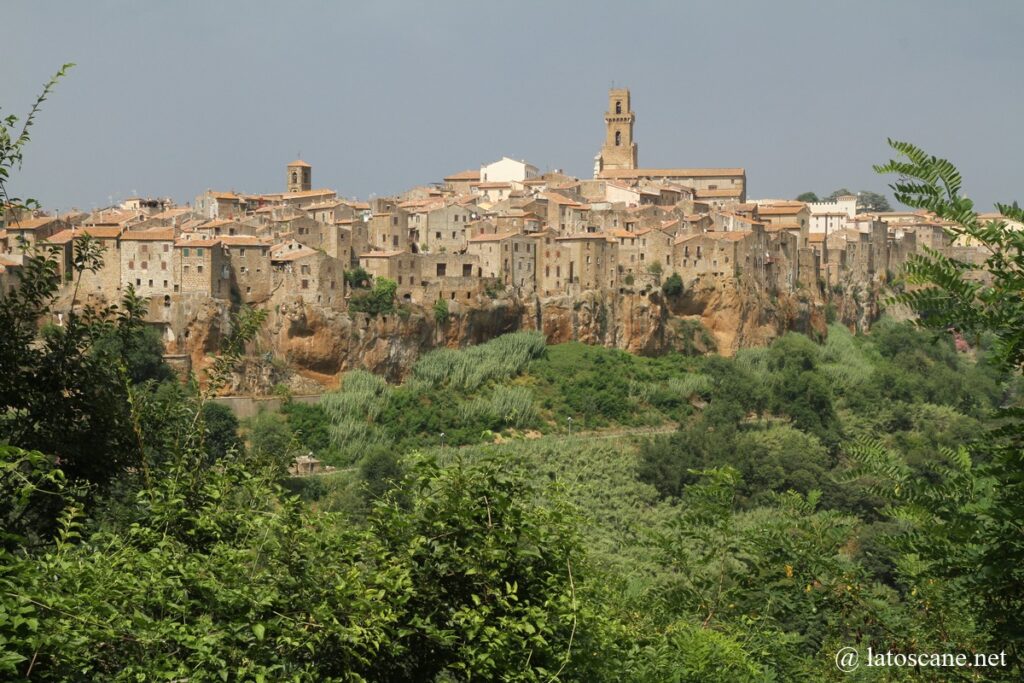
Things to do and see in Pitigliano
Lady of Graces Church
Outside the village, you can stop near this church from which you have a great view of Pitigliano and its tuff spur.
Historic centre
The village of Pitigliano is typical of the villages of the region with its narrow streets formed by high stone buildings, especially in the ghetto.
Shortly after entering Pitigliano by the eastern bridge, you enter the pretty square in front of the massive Orsini Palace. From these balconies you have beautiful views of the surrounding gorges. A beautiful fountain is located at the terminus of the imposing Medici aqueduct built from the 16th century, but whose difficult work lasted more than a century because of the relief.
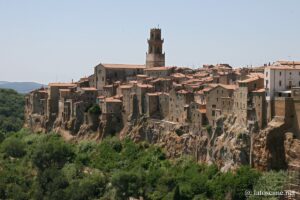
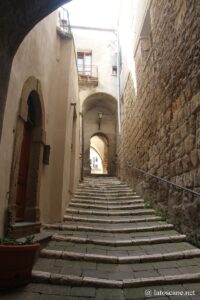
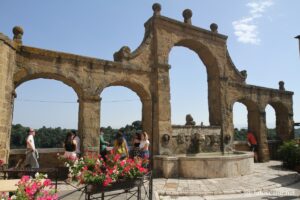
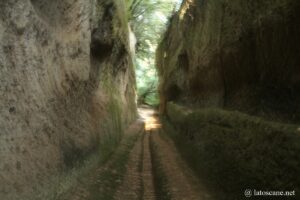
Piazza della Repubblica and Orsini Palace
First place in the center of Pitigliano, Piazza della Repubblica offers two beautiful panoramas with balconies on each side. At the terminus of the Medici aqueduct, the monumental fountain of the 16th century Sette Cannelle, translatable as Fountain of the seven spouts in English, each spout representing an animal head.
The Orsini Palace was a 12th century convent transformed into a fortress by the Aldobrandeschi and a residence, before being occupied by the Orsini until the 17th century. It hosts two museums: the Civic Archaeological Museum and the Orsini Palace Museum.
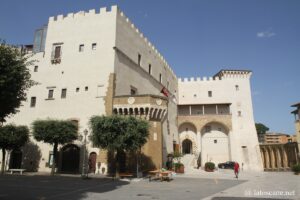
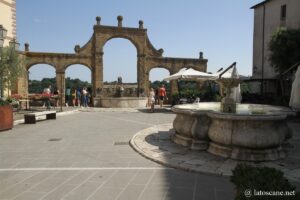
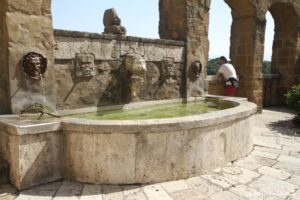
Saints Peter and Paul Cathedral
The Cathedral of Saints Peter and Paul in Pitigliano was built between the 13th and 18th centuries. It mixes several styles, dating back to the Middle Ages, with a baroque facade, a portal of the 16th century and sculptures of the 18th century. The interior preserves beautiful paintings and chapels, or wooden baptismal font of the eighteenth century.
Ghetto, synagogue and Jewish museum
The history of the Ghetto of Pitigliano is told in the Museum of Jewish Culture, including the 1598 Synagogue, the cellar, the butcher’s shop, the purification bath or the dyer’s shop.
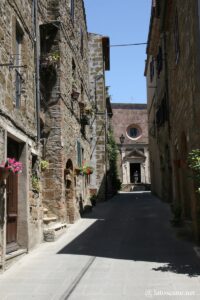
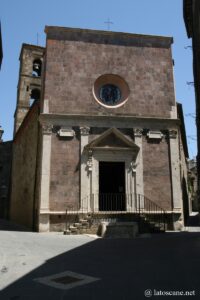
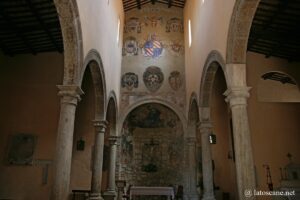
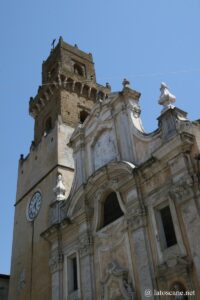
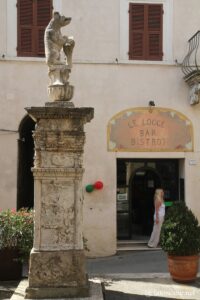
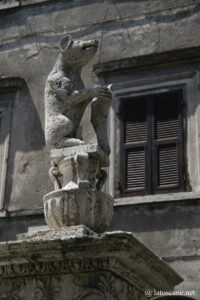

Via Cave and archaeological sites
The other great interest of Pitigliano after the panorama on the village, are the Via Cave surroundings, below the promontory, which can be accessed from the western tip of the village.
These are suggestive passages carved in the tuff rock by the Etruscans, used for chariots and ceremonies. Some are more than a kilometre long with walls reaching 20 metres high, and some graves cross along the route. Among these, the Via Cava di San Giuseppe and the Via Cava di Fratenuti are on either side of the river to the west of the village. On the south side, along Via del Gradone has been built the open-air Archaeological Museum Alberto Manzi with its two paths and panoramic path.
North of Pitigliano is the Orsini Park, a Paleo-Christian temple on the road to Sovana, while 20 km west you reach the necropolis of Poggio Buci.
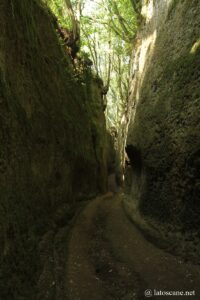
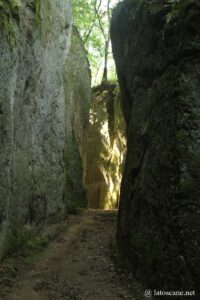
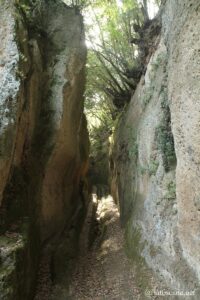
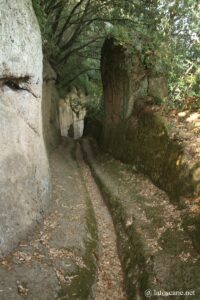
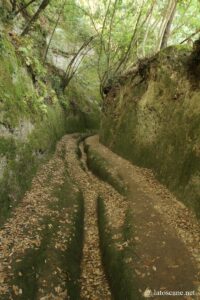
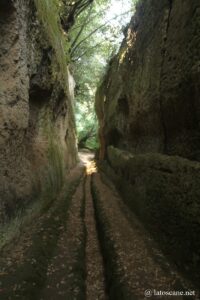
Walls of Pitigliano
The walls of Pitigliano date back to the Middle Ages, with two gates, the Sovana Gate and the Citadel Gate. Some portions are older and even Etruscan on the northwest side, others were integrated into buildings.
Pitigliano surroundings
In the nearby village of Sorano there are other paths carved into the rock by the Etruscans, of the Via Cava, including the Archaeological Park Città del Tufo and the interesting archaeological park of the small and charming village of Sovana with also its via Cava and necropolis.
In the vicinity you can also discover the lake of Bolsena to the east (in the region of Lazio) or the thermal baths of Saturnia to the west and its beautiful natural hot water pools.
Proposal for guided tours in the surrounding area
Where is Pitigliano, map
If you see this after your page is loaded completely, leafletJS files are missing.
Sources and links
- General informations : en.wikipedia.org
- Tourist portals : visitpitigliano.com, www.visittuscany.com
- Area del Tufo : www.visittuscany.com
Posts on Pitigliano
- Area del Tufo – Tuff Valley
 In the south-east of the Maremma, the hills of the Fiora are at the edge of Tuscany and very close to Lazio. They are crossed by the Valle del Tufo ...
In the south-east of the Maremma, the hills of the Fiora are at the edge of Tuscany and very close to Lazio. They are crossed by the Valle del Tufo ... - Sorano and Vitozza
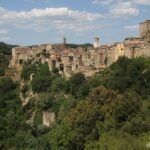 Beautiful village built on a tuff hill, Sorano is located at the edge of Tuscany, almost in Lazio, in the Area del Tufo, like Pitigliano and Sovana.Its occupation grew with ...
Beautiful village built on a tuff hill, Sorano is located at the edge of Tuscany, almost in Lazio, in the Area del Tufo, like Pitigliano and Sovana.Its occupation grew with ... - Sovana
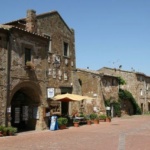 Sovana is a small, charming and pleasant village with only 500 inhabitants, but it has a long history. The houses are distributed along a long street from the remains of ...
Sovana is a small, charming and pleasant village with only 500 inhabitants, but it has a long history. The houses are distributed along a long street from the remains of ... - Hotels in Pitigliano
 Book accommodation immediately in Pitigliano or its surroundings in Tuscany, including hotels, bed and breakfasts, agritourism or apartments
Book accommodation immediately in Pitigliano or its surroundings in Tuscany, including hotels, bed and breakfasts, agritourism or apartments - Hotels in Sovana
 Book accommodation now in Sovana and the Area del Tufo in Tuscany, including hotels, bed & breakfasts, agritourism or apartments
Book accommodation now in Sovana and the Area del Tufo in Tuscany, including hotels, bed & breakfasts, agritourism or apartments
No Comments Yet